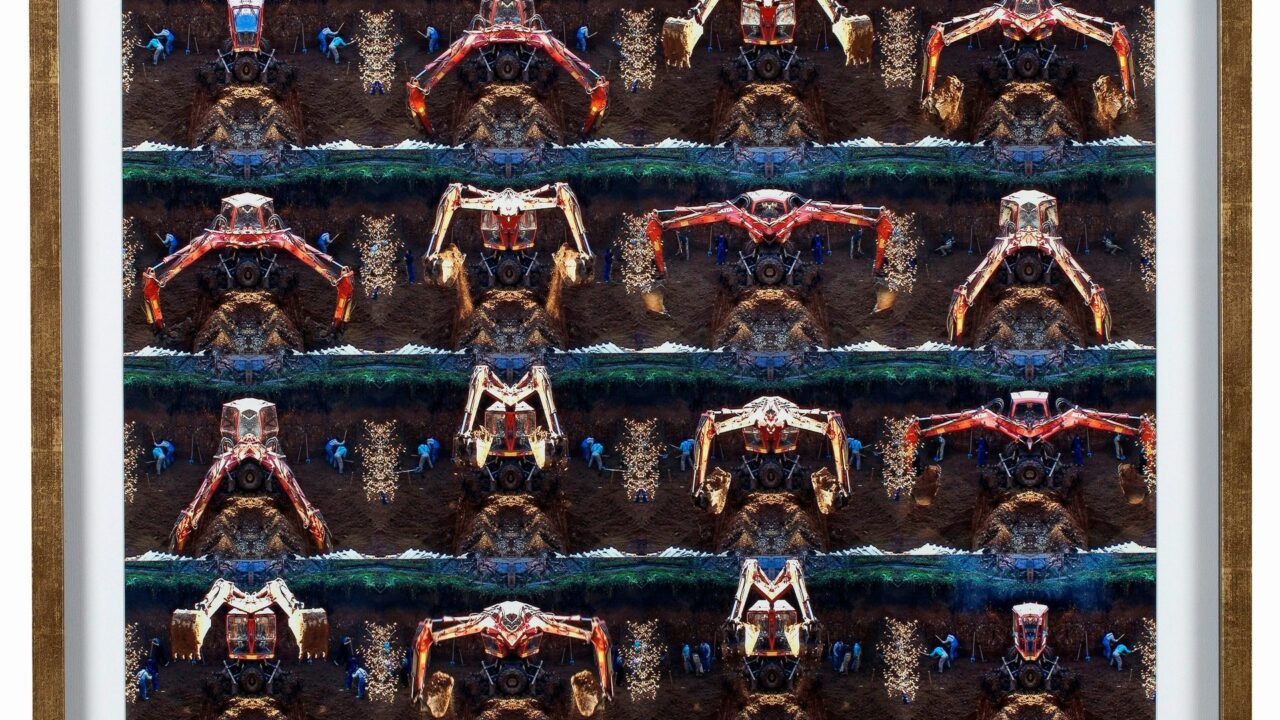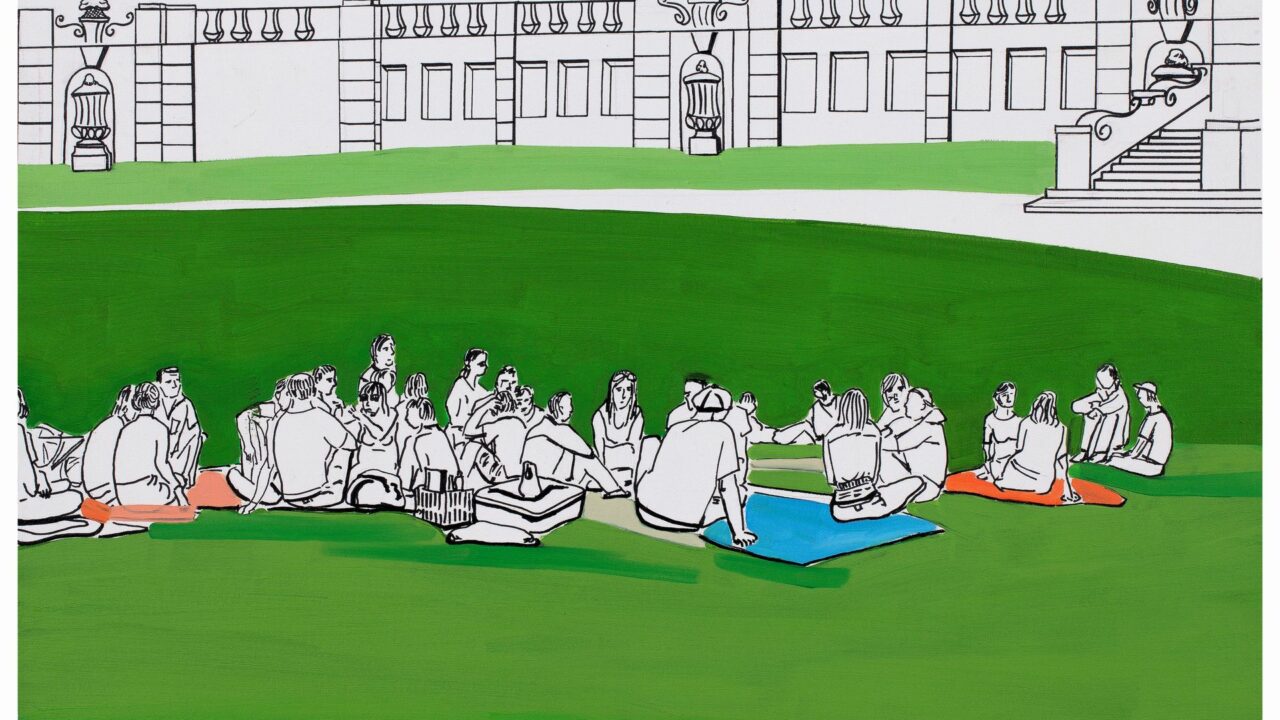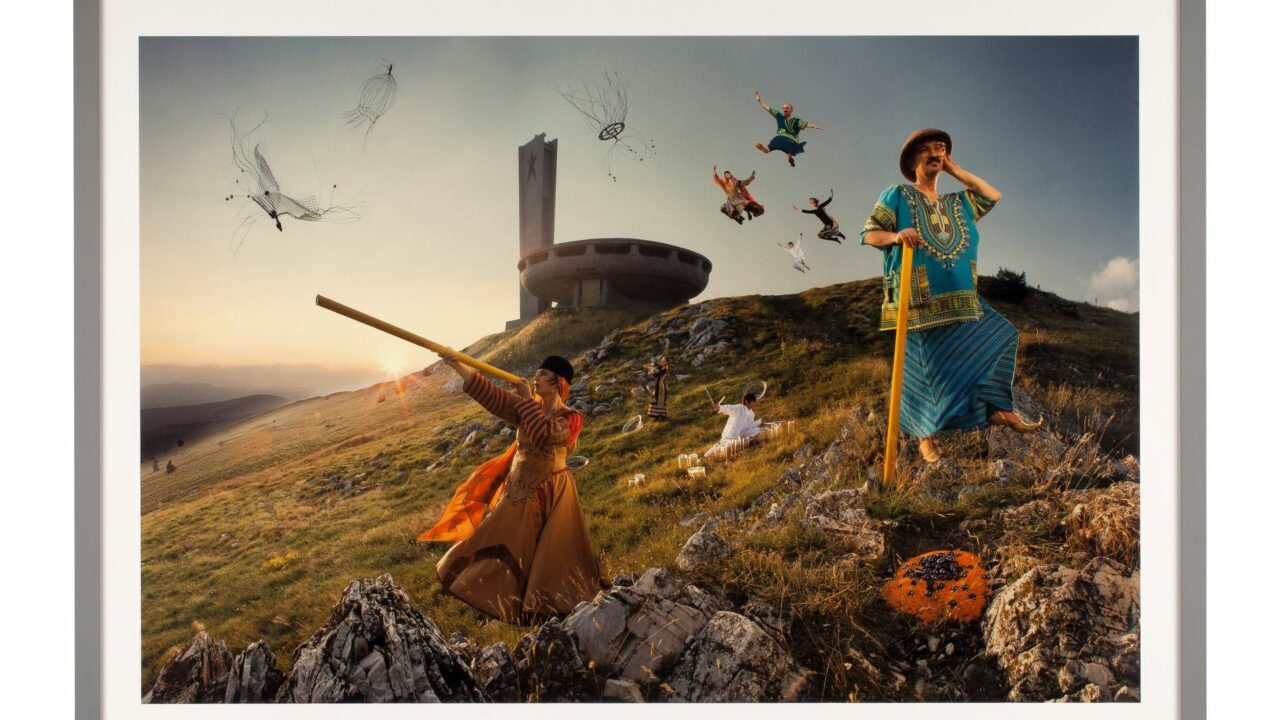6. Democracy and urban transformations
A coherent group of works by Bulgarian artists addresses, in a critical and exemplary manner, various aspects of the influence that Bulgaria’s incorporation into the European Union had on people’s lives.

NADEZHDA OLEG LYAHOVA: Motif I (State Machine), 2008 – On display in Parlamentarium, Brussels

Vasilena GANKOVSKA : An Afternoon at Burggarten #2, 2007 – On display in Parlamentarium, Brussels

Boris MISSIRKOV & Georgi BOGDANOV : Enduring, Derry, 1992 – On display in Parlamentarium, Brussels



Motif I (State Machine), by Nadezhda Oleg Lyahova, is part of the project Globally and on a Long-term Basis the Situation is Positive (2007-2009), that comprises a series of short videos shot on the streets of Sofia, as well as a series of digital prints on canvas (“motifs”) featuring static images from the said videos.
This digital print refers to the excesses of urban development and government intervention in the planning of large cities. The rows of excavating machines, lined up and arranged in horizontal rows like an army of aliens in a primitive video game, symbolize the large-scale construction fever that broke out in Bulgaria after the country’s integration into the European Union. As Lyahova herself has commented:
“As a result of its EU accession on January 1, 2007, Bulgaria was granted a full member status. Hence the opportunity to participate in all “special”, “regional”, “innovative”, “cross-border”, “multicultural” projects aimed at the implementation of “EU norms” and also allowing us to take advantage of a “wide range of opportunities” offered by the EU. (…)There came entrepreneurial investors, bringing equipment and people of all sorts. Intensive construction work started. Construction equipment roared in the neighbourhood. Concrete and iron replaced the green grass. In the midst of thunder, mud and clouds of dust enthusiastic people and machines do their daily bit to build our European future”.
The idealistic counterpoint to the critical and skeptical vision of Lyahova would find an idyllic representation in the poster designed by the Polish illustrator and painter Rafał Olbiński, where a female personification of Europe, in harmony with pictorial models of the Italian Renaissance, sleeps peacefully before a bucolic landscape, while emblematic buildings of Poland sprout from her dreams.
A light vision of pure enjoyment in urban spaces is provided by Vasilena Gankovska‘s painting, where youth people carelessly gather in the meadow of Vienna’s Burggarten Park – An Afternoon at Burggarten #2 (2007) -.
If the work of Oleg Lyahova was about a new city in the process of construction, the digital photography of the duo Missirkov & Bogdanov – Weekend 2126. The Valchevs (2008) -, instead looks back at the institutional architecture of the communist regime; namely the Memorial House of the Bulgarian Communist Party, Buzludzha (1981), currently seen as an extraordinary monumental relic that still maintains a futuristic, science-fiction look.
The building, in the shape of a UFO (a sort of Brutalist, retro-futurist, flying saucer), stands out in the background of an imaginary landscape, where the members of a family dressed in folkloric costumes move around.
As the critics have pointed out:
“In Weekend 2126 – The Valchevs (2008), the Valchev family is depicted as being on a sunny Sunday outing, languidly strolling the slopes of Mount Buzludzha. Some family members are even in the act of idly composing some musical score, just after having landed their ship on top of the mountain in an otherwise deserted landscape. This scene, though referencing a reimagined old and a half-remembered new, is set in the future, that much is clear. This, despite the quirkiness of their ethno-medieval-esque dresses, dashiqui-like shirts and handmade musical instruments that are reminiscent of some long-forgotten, yet pop-cultured, folklore. Missirkov/Bogdanov’s tableau offers a possible version of how Buzludzha might be viewed and valued several generations later”.